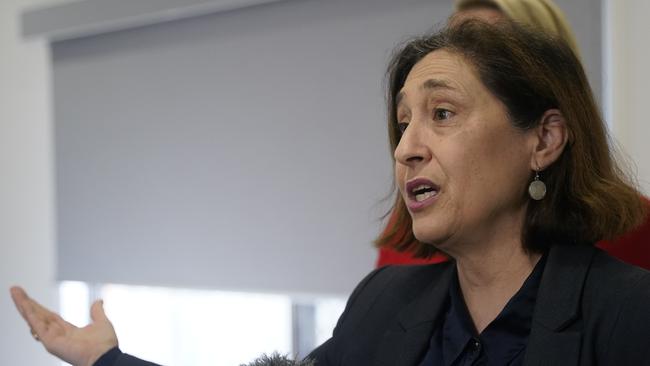
Of course, intra-industry trade between countries is quite common but, in the main, the goods exported and those imported are different categories of the same product. In the case of LNG, the molecules are identical.
How did this bizarre situation come to pass? How is it that a country so blessed with resources, including large reserves of natural gas, can achieve such a ridiculous and costly arrangement?
It’s worth going through some of the background to understand current events. The LNG export industry is based in Queensland and Western Australia. In the case of Queensland, the exploitation of the large reserves of coal seam gas allowed the development of the Gladstone hub, where processing, liquefaction, storage and transport take place. A number of companies are involved. Long-term export contracts have been entered into of 20-30 years’ duration. At the time the initial investments were being made, there was some discussion of whether some of the gas should be reserved for domestic use. But the Labor government declined to make this a condition for the awarding of export permits.
Since then two major developments have occurred that have affected the gas market on the east coast. The first is the completely predictable decline in the available gas reserves in the Gippsland Basin that have been the backbone of gas supply for Victoria and NSW. The second is the effective war waged against new gas developments by the Victorian and NSW governments and, at times, the federal government. This war has also extended to the use of gas by households.
If there is a single individual who can be blamed, it is Lily D’Ambrosio, Victoria’s long-serving Minister for Climate Action, Energy and Resources. Notwithstanding the knowledge that Victoria’s reserves would run out, her hostile approach to the gas industry has led to the current stalemate. Some of her actions include imposing a constitutional ban on fracking, banning the conventional drilling for gas (until recently), banning use of gas appliances in newly constructed dwellings, and banning replacement of gas appliances in existing dwellings. She refused to allow gas to be one element of a capacity mechanism to shore up the electricity grid when electrons from renewable energy are unavailable. According to her misguided thinking, renewable energy can back up renewable energy.
Not that other parties should be let off the hook. NSW has faffed around, erecting road blocks to the gas development around Narrabri. This is notwithstanding the fact that the company has always guaranteed the gas would be reserved for domestic purposes. Note here NSW is almost completely reliant on other states for gas.
Other culprits are the big gas users, the large manufacturing plants that cannot operate on anything other than gas. Think here fertilisers, food processing, brickmaking, packaging. There was a time these users could have committed to long-term contracts at fixed prices but most of them simply dithered. The operators thought the prices on offer were too high – they don’t think that now – and they decided to rely on the spot market instead.
Had the big users decided to form an alliance, they might have persuaded the federal government to act, including by forcing the hand of state governments to facilitate development of new gas fields as well as contribute to funding the required infrastructure.
If we fast-forward to now, the situation is dire. This has been made clear in the most recent update on the east cost gas market from the Australian Competition and Consumer Commission. According to the ACCC: “In the absence of new supply in the southern states to fill the gap, consumers will depend in the near term on gas transported from Queensland. As southern haul pipeline capacity becomes increasingly constrained, southern states will likely have to depend on imported LNG. Domestic gas prices will therefore become increasingly driven by international oil and gas prices and the cost of transporting gas large distances.”
The concern is not just with the price of gas for direct users but the fact gas is very often the setter of the electricity price as the marginal supplier in the National Electricity Market. Again, as the ACCC notes, “as we increasingly rely on renewables for energy generation, gas will be required to support energy security, reliability and affordability”.
Tragically, the light-bulb realisation of the central role gas must play in the grid came late to federal Climate Change and Energy Minister Chris Bowen, and even later to D’Ambrosio, although it’s not clear she is fully on board. Whether this realisation is being translated into action is uncertain.
For example, the proposed gas development off the shore of Sydney’s northern beaches, the PEP-11 project – has recently been rejected by Industry Minister Ed Husic, a decision backed by the NSW government. In the meantime, the price of gas in Australia remains extremely elevated, particularly compared with the low cost of domestic gas in the US. Bear in mind the delivered price of LNG is about twice the price of piped gas, given the cost of liquefaction/degasification and transport, in particular.
The attempt by the federal government to cap the price of domestic gas at $12/gigajoule when war in Ukraine began has been a complete failure. While the intervention served to deter investment in the industry, virtually all gas producers were able to secure conditional ministerial exemptions from the Gas Code’s reasonable price provisions.
The ACCC concludes: “We therefore do not expect the Gas Code to have had a material impact on observed prices.”
The main game now is to lock in a suitable site in the southern states for an LNG receiving terminal, including the need for adequate storage. There are several options being floated including the terminal at Port Kembla developed by Squadron Energy owned by Andrew Forrest, a terminal at Corio Bay and a floating terminal in Port Phillip Bay.
Whatever the final decision, the outcome will be expensive. There will also be a need for foundation customers as well as the potential for the government to underwrite the arrangement, possibly through AEMO. It is a clear example of a pig with lipstick but this is the current situation.
It takes a considerable amount of time before gas is discovered and is ready for market – it’s not like flicking a switch, to use a bad pun. Pipelines also take time to plan and build.
Even if the Queensland producers released more gas for use in NSW and Victoria, the pipeline is already at capacity. It’s just a pity our governments have let us down so badly.



I’m sure I’m not the only one who thinks it’s passing strange – more than passing strange – that Australia is about to become an importer of liquefied natural gas as well as an exporter.